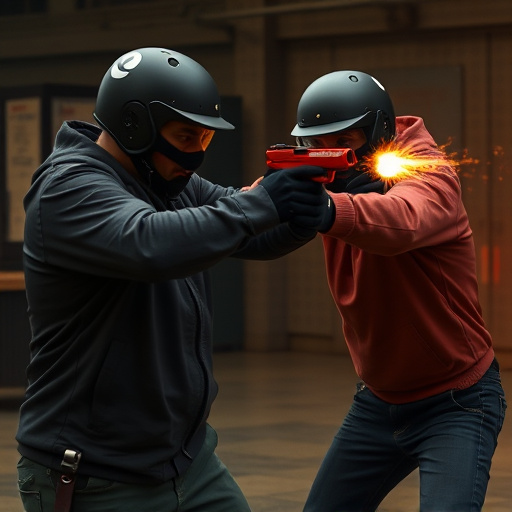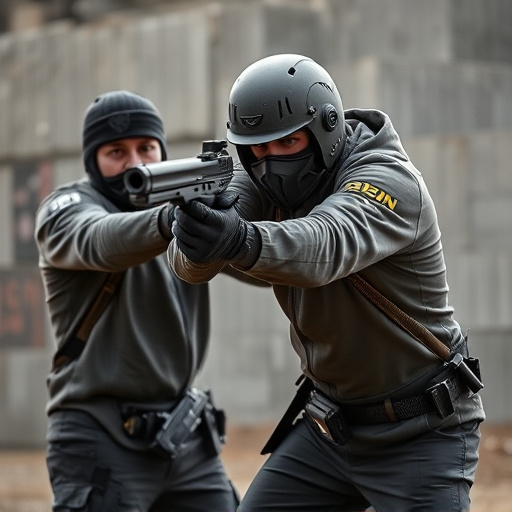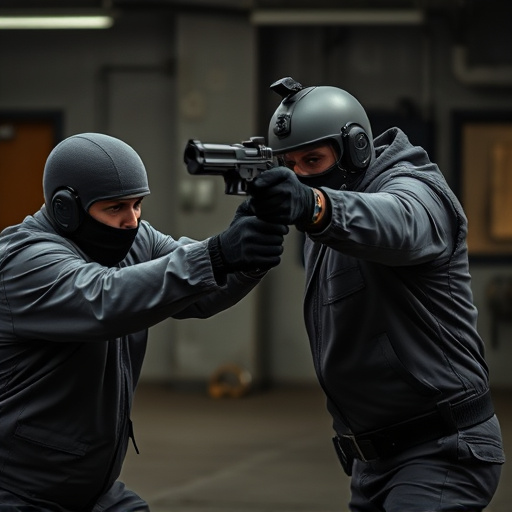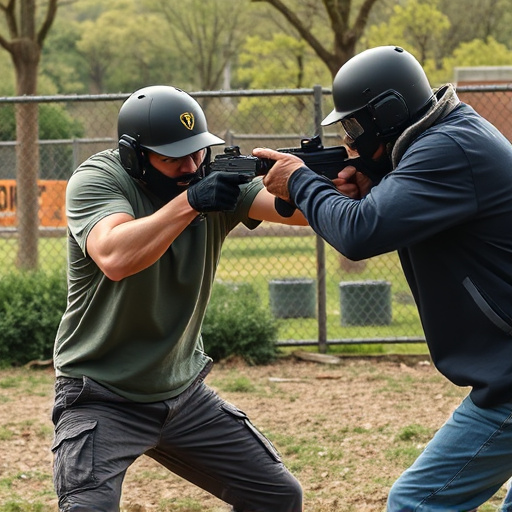TL;DR:
Optimal electrode spacing in a concealed stun gun flashlight combo (2.5-5 cm) is vital for discreet yet powerful self-defense. This balance allows for high amperage shocks while ensuring reliability in low-light or hidden scenarios, where every second counts. Strategic electrode placement and conductive materials enhance precision and shock intensity. Correct target alignment and firm grip maximize electricity transfer, making the stun more consistent and safe.
Discover the secret to maximizing the power of self-defense with our in-depth exploration of stun gun electrode spacing. Learn how the right placement can deliver a more effective shock, especially when using concealed stun gun flashlight combos. We’ll break down the basics, uncover key factors influencing electrode effectiveness, and provide best practices for optimal results. Whether you’re a professional or just interested in personal safety, this guide offers valuable insights into enhancing your defense strategy with stun guns.
- Understanding Stun Gun Electrode Spacing: The Basics
- The Role of Concealed Stun Gun Flashlight Combos in Self-Defense
- Factors Affecting the Effectiveness of Electrode Placement
- Best Practices for Optimal Stun Gun Electrode Spacing
Understanding Stun Gun Electrode Spacing: The Basics

Understanding Stun Gun Electrode Spacing: The Basics
When it comes to stun guns, electrode spacing plays a crucial role in their effectiveness. In simple terms, this refers to the distance between the two electrodes inside the device. For concealed stun gun flashlight combos, where discretion is key, proper electrode spacing ensures that the device remains undetectable while still delivering powerful jolts. A well-designed combo combines a small, sleek stun gun with integrated flashlights, allowing users to defend themselves in low-light conditions or hidden environments.
Electrode spacing affects the current flow and voltage output of the stun gun. Closer electrode spacing results in higher amperage, which means more intense shocks. However, it also increases the likelihood of skin resistance building up, potentially reducing the effectiveness. Thus, optimal electrode spacing strikes a balance between power and reliability. This is especially important for self-defense tools meant to be easily concealed, like stun gun flashlight combos, ensuring they remain effective in real-world scenarios where every second counts.
The Role of Concealed Stun Gun Flashlight Combos in Self-Defense

In today’s digital era, where personal safety is a paramount concern for many individuals, concealed stun gun flashlight combos have emerged as innovative tools in self-defense strategies. These devices offer a unique advantage by combining the power of a stun gun with the illumination of a flashlight, creating a versatile and effective defense mechanism. The concealed nature of these combos allows users to carry them discreetly, ensuring they are always prepared for unexpected situations.
The effectiveness of a concealed stun gun flashlight combo lies in its dual functionality. During low-light conditions or in enclosed spaces, the built-in flashlight provides clear visibility, enabling users to assess and navigate dangerous scenarios. Simultaneously, the stun gun component serves as a powerful deterrent against potential attackers, delivering a strong electric shock that can incapacitate an opponent temporarily. This combination offers a strategic advantage, as it not only ensures better situational awareness but also increases the likelihood of escaping or neutralizing a threatening situation effectively.
Factors Affecting the Effectiveness of Electrode Placement

The effectiveness of electrode placement in a concealed stun gun flashlight combo is influenced by several key factors. Firstly, the size and shape of the electrodes play a crucial role; smaller, more precise electrodes can deliver targeted jolts, increasing the likelihood of incapacitating a target without causing unnecessary harm. Additionally, the distance between the electrodes matters; closer spacing ensures a more concentrated electric current, enhancing the stun’s impact.
Moreover, the material and conductivity of the electrode design are essential. High-quality materials that conduct electricity efficiently ensure optimal energy transfer, making the stun more effective. The combination of these factors—electrode size, spacing, and material—is vital to achieving maximum effectiveness in neutralizing a threat while maintaining the discreetness associated with concealed stun gun flashlights.
Best Practices for Optimal Stun Gun Electrode Spacing

When it comes to using a concealed stun gun flashlight combo, optimal electrode spacing is critical for maximum effectiveness. The distance between the electrodes directly impacts the electric current’s ability to flow through the target, ensuring a powerful stun. Best practices suggest maintaining a spacing of approximately 1-2 inches (2.5-5 cm) between the electrodes on most stun devices. This range allows for an efficient transfer of electricity, making the stun more reliable and consistent.
To achieve this, users should ensure proper alignment of the electrodes with the target’s body. For a concealed stun gun flashlight combo, targeting the center mass (waist or chest area) is ideal as it provides a broader surface area for electrode contact. Additionally, maintaining a steady grip and aiming for firm, yet controlled pressure, will help achieve optimal electrode spacing during deployment, maximizing the stun’s impact while minimizing the risk of injury to both user and target.
When it comes to self-defense, understanding the optimal electrode spacing for your stun gun is key. By considering factors like target size and body type, you can maximize the effectiveness of a concealed stun gun flashlight combo. Following best practices ensures that you’re prepared and capable of neutralizing a threat swiftly and safely. Remember, proper training and knowledge are as essential as the device itself in ensuring your personal security.
